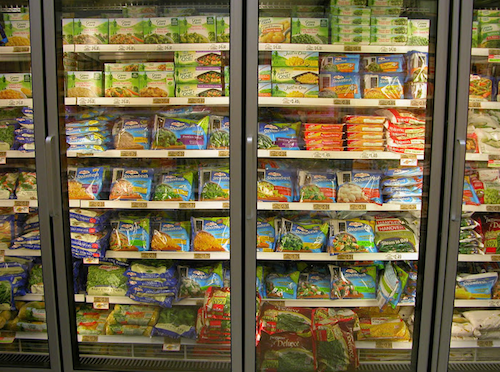Soy Foods Lower Risk for Breast Cancer
 Women who consume more soy foods and other legumes rich in isoflavones are less likely to die from breast cancer.
Women who consume more soy foods and other legumes rich in isoflavones are less likely to die from breast cancer.There have been growing concerns, particularly among American oncologists treating breast cancer, that isoflavones found in soy foods may increase the risk of cancer recurrence among breast cancer patients. It is known these patients benefit from lower functional levels of estrogen and estrogen blocking drugs like tamoxifen have clearly led to reduced breast cancer recurrence and increased survival in women after surgical removal of the breast cancer - particularly if it was an estrogen sensitve primary tumor. Many physicians have grown particularly concerned that soy isoflavones may compromise the effect of tamoxifen and other hormone blocking drugs because both tamoxifen and isoflavones bind to the same estrogen receptors and studies in rodents have suggested in high doses soy isoflavones such as genenstein can interfere with drug binding that may reduce its effects. Others note that soy isoflavones can mimic some of the effects of estrogen itself and so they fear it might even promote breast cancer cell growth even in women not being treated for breast cancer. To access these growing concern about soy products possibly promoting breast cancer recurrence or growth in women diagnosed with breast cancer two recent studies looked at the association between soy food intake and breast cancer outcomes among breast cancer survivors. One study published online October 18,2010 in the Canadian Medical Journal followed 524 women 29 to 72y who had been diagnosed with breast cancer in 2002 who were receiving tamoxifen and other drugs to control estrogen levels after surgery to remove the primary cancer lesion. Results showed the women who consumed the most soy foods had 12.9% fewer cases of breast cancer recurring than in those that consumed the least. The impact was greatest in women taking anastrosole where recurrence was 20% greater in those consuming the least compared to the most soy foods.The second study used data from a collaborative study, the After Breast Cancer Pooling Project. This research looked at outcome data in the USA and China which included 18,312 women between the ages of 20 and 83 years who had invasive primary breast cancer. Soy isoflavones intake was assessed for 16,048 of these women on average of 13 months after breast cancer diagnosis using food frequency questionnaires for a group of soy isoflavones in three cohorts and on tofu and soy milk consumption in one cohort. Breast cancer outcomes were assessed, on average, nine years after cancer diagnosis. Among the survivors who consumed the most soy isoflavones (> 23 mg/day) were compared with the outcomes of those whose intake was lowest (<0.48 mg/ day). The average daily soy isoflavone intake among U.S. women was only 3.2 mg; however, in the Shanghai group the amount was significantly higher at 45.9 mg. The results showed the women with the highest intake of soy isoflavones had a 9% reduced risk of mortality and a 15% reduced risk of breast cancer recurrence, compared to those consumed the least soy. These results did not quite reach statistical significance but certainly were consistent with a protective effect and did not support the growing belief that women diagnosed with breast cancer need reduce their intake of soy foods, especially if their cancer is hormone sensitive. “Our results indicate it may be beneficial for women to include soy food as part of a healthy diet, even if they have had breast cancer,” said Shu. “This can’t be directly generalized to soy supplements, however, as supplements may differ from soy foods in both the type and amount of isoflavones.” Further analysis of the data from this study, elucidating the interaction of soy isoflavones and tamoxifen, will be presented at the AACR Annual Meeting.The results of these two studies are consistent with large amounts of earlier data which has shown that women who consume more soy foods and other legumes rich in isoflavones are significantly less likely to develop breast cancer and are less likely to die from breast cancer. Asian countries where breast cancer rates are far lower than in the USA and most other countries consume on average a lot more soy foods, but such epidemiological data is only suggestive of a benefit.Bottom Line: Two recent studies of women who survived breast cancer both found consuming more soy food appears if anything to decrease the risk of breast cancer recurrence or death among survivors of breast cancer taking estrogen blocking drugs. Physicians who tell women to avoid soy foods because they fear they may stimulate recurrence and/or promote the growth of breast cancer are likely doing more harm than good. By James J. Kenney, PhD, RD, FACN.
